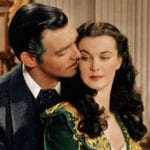 Mysteries
Mysteries  Mysteries
Mysteries  History
History 10 Surprising Stories About the Texas Rangers
 Humans
Humans 10 Philosophers Who Were Driven Mad by Their Own Theories
 Miscellaneous
Miscellaneous 10 Video-Game-Worthy Weapons and Armors from History
 Weird Stuff
Weird Stuff 10 Psychics Who Accurately Predicted Wartime Events
 The Arts
The Arts 10 Pieces of Art Inspired by a Broken Heart
 Health
Health 10 Science Fiction-Sounding New Medical Treatments
 History
History 10 Surprising Facts About the Father of Submarine Warfare
 Space
Space Ten Astonishing New Insights into Alien Worlds
 Weird Stuff
Weird Stuff 10 Bizarre Summer Solstice Rituals Still Practiced Today
 Mysteries
Mysteries Top 10 Haunting Facts About the Ghost Ship MV Alta
 History
History 10 Surprising Stories About the Texas Rangers
 Humans
Humans 10 Philosophers Who Were Driven Mad by Their Own Theories
Who's Behind Listverse?

Jamie Frater
Head Editor
Jamie founded Listverse due to an insatiable desire to share fascinating, obscure, and bizarre facts. He has been a guest speaker on numerous national radio and television stations and is a five time published author.
More About Us Miscellaneous
Miscellaneous 10 Video-Game-Worthy Weapons and Armors from History
 Weird Stuff
Weird Stuff 10 Psychics Who Accurately Predicted Wartime Events
 The Arts
The Arts 10 Pieces of Art Inspired by a Broken Heart
 Health
Health 10 Science Fiction-Sounding New Medical Treatments
 History
History 10 Surprising Facts About the Father of Submarine Warfare
 Space
Space Ten Astonishing New Insights into Alien Worlds
 Weird Stuff
Weird Stuff 10 Bizarre Summer Solstice Rituals Still Practiced Today
Top 10 Ridiculous Instances Of Censorship In Pop Culture
Censorship. Some deem it the tool of an oppressive regime, others consider it necessary to maintain the moral fabric of society. There were probably instances where it fulfilled both roles. However, in the case of these 10 works of entertainment, censorship either failed miserably or made things worse.
10 Adultery Is Bad, Incest Is Okay

Mogambo is a 1953 adventure film set in Africa starring Clark Gable as big game hunter Victor Marswell. Part of the plot involved a budding love triangle between Gable’s character and Eloise Kelly and Linda Nordley, played by Ava Gardner and Grace Kelly, respectively. Also along for the ride was Linda’s husband, Donald.
Linda’s marriage was a key component to the story since it was the main thing that kept Marswell at a distance and, eventually, guilt-trips him into depression and heavy drinking. However, not everyone was cool with Linda’s relationship with Marswell, particularly in Francoist Spain. Censors in the military dictatorship deemed the adulterous affair absolutely impermissible.
The only way to make it permissible was if Linda wasn’t married. Therefore, the Spanish dubbing of Mogambo changed Linda and Donald from husband and wife to brother and sister.[1] Of course, all the scenes in the movie where the two acted as a married couple now suggested an incestuous relationship between siblings. However, this apparently was okay with the Spanish censors.
9 Censorship Jumps The Shark
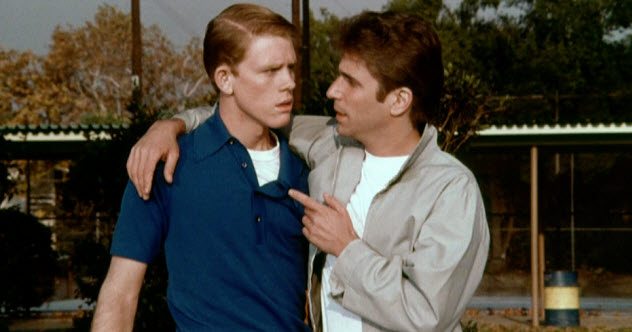
In 1999, TV Guide named Arthur Fonzarelli (aka Fonzie) the fourth greatest TV character of all time. A breakout star and a staple throughout all 11 seasons of Happy Days, Fonzie was the essence of cool thanks to his rebellious look and demeanor.
A key part of that look was his signature leather jacket which became so iconic that it is currently housed at the Smithsonian Museum. However, if ABC censors had their way, Fonzie would have been wearing a friendlier, more wholesome, light gray windbreaker.[2]
The network felt that the leather jacket made Fonzie look like a hoodlum and was inappropriate given the tone of the family show. However, show creator Garry Marshall felt that the edgy look was exactly what set Fonzie apart and pushed hard against the wardrobe change.
Eventually, the two sides compromised. The Fonz could wear the leather jacket but only when he was next to his motorcycle. It was considered “safety equipment” under those circumstances.
This rule went away after the show’s first year since Fonzie became such a big hit. However, the first season has the character standing next to his bike even in indoor scenes. On the few occasions that he is not, Fonzie can be seen wearing the windbreaker.
8 Showgirls Without The Show Or The Girls
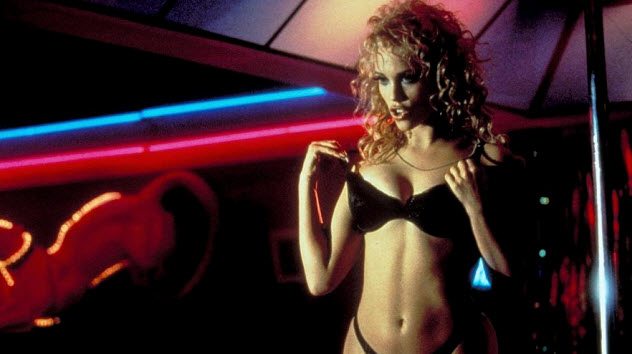
The 1995 erotic drama Showgirls is regularly touted as one of the worst movies ever made. However, it also proved popular with the “so bad it’s good” crowd and became a cult hit. With over $100 million generated from video rentals alone, Showgirls actually turned into one of MGM’s most profitable movies.
The acting and the writing are terrible. Realistically, the only reason many people watched Showgirls was to see the shocking transformation of Elizabeth Berkley from squeaky-clean teen on Saved by the Bell to foulmouthed, violent stripper. In fact, all the nudity garnered Showgirls a dreaded NC-17 rating. To this day, it remains the only film with this rating to receive a wide release in mainstream theaters.
To say that the sex was an integral part of the film’s plot and success would be an understatement. However, seeing how well Showgirls was doing on home video, eventually someone decided that it should come out for TV as well. Of course, it couldn’t show any of the truly raunchy stuff, so a new edit was made that was absolutely ridiculous.
All the sex scenes are edited out of this version with some jarring and painfully obvious cuts. The profanity is replaced using terrible dubbing. But without a doubt, the cherry on top was the digital bras added to all the strippers.[3] Looking like they were done in Microsoft Paint, the bras are poorly rendered, clearly fake, and struggle to keep up with the actors’ movements.
7 Lucy Is Enceinte
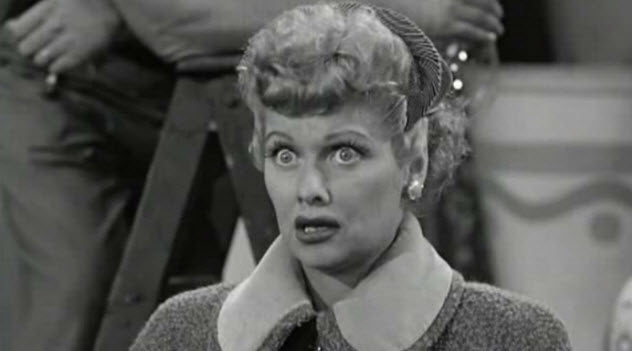
In its day, I Love Lucy was not only hugely successful but also groundbreaking. It was the first sitcom filmed using multiple cameras and on 35mm film. This allowed the recording and preservation of episodes in high-quality which could then be shipped all over the country.
Prior to this, less important markets had to suffice with inferior-quality kinescopes of the originals. It was also the first program to show reruns. It was among the first shows to promote an interracial relationship. Yet its landmark moment happened during the second season when star Lucille Ball became pregnant.
It was only the second time that a lead character was visibly pregnant in a TV show. (The first occurred on Mary Kay and Johnny in 1948.) Right off the bat, CBS executives deemed the word “pregnant” too vulgar to be used on television. Instead, the episode was titled “Lucy Is Enceinte” which means “pregnant” in French. Throughout the show, characters had to either imply the pregnancy or use other terms such as “expecting” or “having a baby.”[4]
The pregnancy was covered in a seven-episode story arc during which CBS hired a minister, a priest, and a rabbi to attend each filming and make sure there was no objectionable material. In the end, the episode where Lucy gives birth, titled “Lucy Goes to the Hospital,” was viewed by 72 percent of American homes with TV sets and became one of the most watched episodes in history.
6 War On Udders
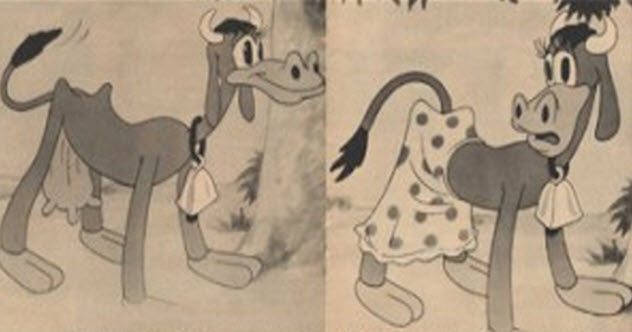
Clarabelle Cow might be a minor supporting character in the Mickey Mouse universe, but she became the target of prudish censors in the 1930s due to her carefree flaunting of her voluptuous udders. In 1931, the Motion Picture Producers and Distributors of America announced a countrywide ban on cartoon udders.
Apparently, the sight of the “gargantuan organ” was enough to shock and even repulse many loyal Mickey Mouse viewers. Their new demand going forward was for udders to be small or invisible.[5]
Animators didn’t want to do that since the whole point of using giant udders was to appear comical. Instead, they took to putting dresses on their cows and this included cartoon bovines that weren’t anthropomorphized in any way.
The ban lasted for about a decade. It was mocked in the media after it was revealed that the Hays Office removed a milking scene in the 1940 live-action film Little Men. While udders were not banned outright, a memo from the Hays Office said that udders should be “suggested, not shown.” Otherwise, the movie would not get approved by state censors in certain areas.
A year later, the cartoon “Old MacDonald Duck” featured a scene with Donald milking a cow, suggesting that the udder ban was over.
5 Homosexuality Is Bad, Incest Is Still Okay

Sailor Moon was one of the most popular anime of the 1990s. Its reach extended far beyond Japan as it was dubbed in multiple languages and shown all over the world.
The American version, besides dubbing the show in English, made several changes. This included Americanizing the names, changing pop culture references, editing some brief nudity, and toning down the violence. Most notably, though, it also changed the dynamic of the relationship between two of the main characters—Sailor Neptune and Sailor Uranus.
In the original show, Neptune and Uranus, real names Michiru and Haruka, were clearly depicted as a lesbian couple. Haruka was a bit more butch, preferring to wear short hair and dress in men’s clothing.
The two often walked while holding hands, talked sweet nothings, and exchanged long gazes with each other. In one scene, they even kissed. American censors felt this was inappropriate and thought it better to change them from gay lovers into two creepy cousins who were “very close.”[6]
In two other instances, censors took male characters and just had them dubbed by female voice actors in English to suggest that they were, in fact, women. One of them was Zoisite, a warrior in love with another male warrior named Kunzite. The other was Fish Eye, a male villain who dressed in women’s clothing.
4 Demonic Erections Are Also Okay

This is a unique entry in that nothing actually got censored. However, due to the fear of censorship, the final result ended up being much more graphic than originally intended.
Back in 2013, Seth Rogen and Evan Goldberg wrote and directed the disaster comedy This Is the End. It featured six actors playing exaggerated versions of themselves trying to survive the apocalypse in James Franco’s home.
Memorably, it culminates with a giant, anatomically correct Satan wreaking havoc before a light from the sky chops off his penis, which crashes onto a nearby building. All of this happens to the tune of Whitney Houston’s “I Will Always Love You.”[7]
Here’s the weird part: Rogen and Goldberg never intended or expected that scene to make it into the film. There is another part in the movie which features a sex scene between Jonah Hill and a shadowy demon figure with a massive erection. That’s the scene the directors really wanted to keep.
But they were fearful of getting the dreaded NC-17 rating from the MPAA. They took the advice of a Sony executive to include other, more graphic scenes in the film which could subsequently be cut to make the movie appear cleaner.
Rogen and Goldberg were hoping that the giant, disembodied devil penis would be so shocking to the MPAA that it would make the demon sex scene seem tame in comparison. Amazingly, the MPAA returned with an R rating—no cuts necessary. Goldberg learned a valuable lesson: “As long as it’s a demon, you can have an erection.”
3 Nobody Poops
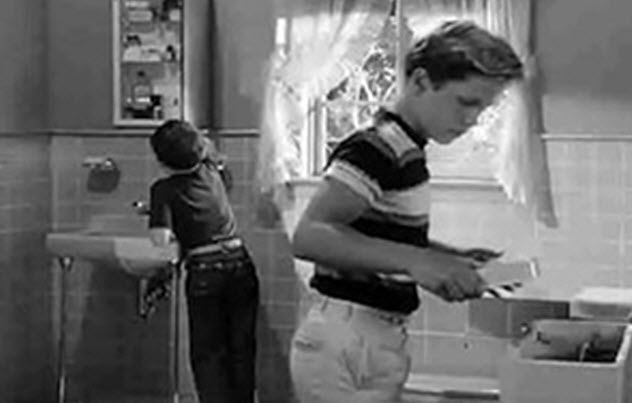
The toilet has had a rough time on television. For decades, censors were repulsed by the notion of simply suggesting the existence of toilets. In 1960, Tonight Show host Jack Paar briefly quit the show after one of his jokes was cut. It used the letters “WC” implying “water closet.”
In 1971, audiences were shocked after All in the Family broadcast the first toilet flush ever heard on American television. However, the first toilet shown on TV actually occurred in 1957 on the debut episode of Leave It to Beaver.
The landmark moment didn’t go down swimmingly. On one hand, CBS Standards and Practices was absolutely against showing a toilet (or a bathroom, for that matter) on television. On the other hand, the toilet was integral to the plot, which revolved around Wally and Beaver buying a baby alligator as a pet and keeping it in the toilet tank.
At first, it looked like the two sides were at an impasse and the episode was replaced. Eventually, they compromised and decided that they could show the upper half of the toilet tank briefly as long as the bowl was not visible.[8]
2 They Can’t Censor What They Don’t Understand
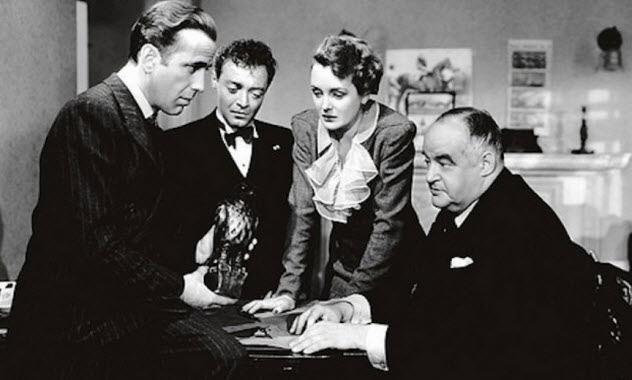
Dashiell Hammett was a pioneer of the hard-boiled detective genre. Arguably, his magnum opus was The Maltese Falcon. Originally, it was serialized in the pulp magazine Black Mask. The most famous movie adaptation came in 1941 starring Humphrey Bogart as the iconic Sam Spade.
Being subjected to the Hays Code, the movie dropped most of the homosexual subtext regarding Joel Cairo and the Fat Man’s gunman, Wilmer. However, there was one word that Hammett managed to slip by both movie and book censors because none of them knew what it meant.
Originally, the novel was more straightforward regarding Cairo’s homosexuality and also referred to Wilmer as a “catamite.” It also used the archaic expression “on the gooseberry lay,” which meant to steal linen off a washing line. The Black Mask editor deemed all of these inappropriate and had the author remove them. Hammett did as asked but took to calling Wilmer a gunsel.
The word came from a secret language called thieves’ cant which, in 1920s America, was primarily used by hoboes. While the editor was able to spot the expression “gooseberry lay,” which came from the same vocabulary, he assumed gunsel meant gunman.
Actually, gunsel came from the Yiddish for “gosling” and was slang for a young homosexual.[9] The word made it into the book and the movie where Sam Spade calls Wilmer a gunsel three times.
1 Monkey-Fighting Snakes On A Monday-To-Friday Plane
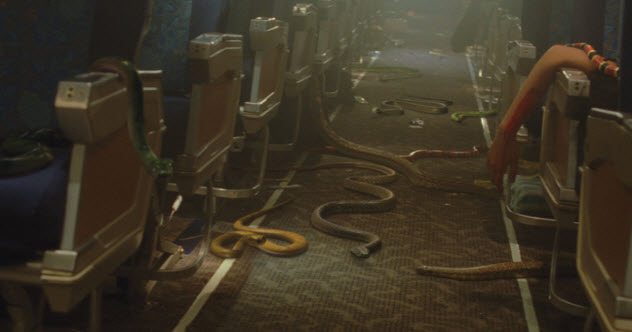
Let’s say you are a TV executive and you want to show a popular movie on your channel. The only problem is that the movie has the kind of profanity that isn’t allowed on US television.
Normally, the scenes in question would get cut, but that’s not possible when dealing with iconic movie moments. The only other solution is dubbing over the profanity, which creates the potential for (unintentional) hilarity.
A pertinent example is the 2006 action flick Snakes on a Plane. In it, Samuel L. Jackson delivers the popular line, “I have had it with these motherf—g snakes on this motherf—g plane.”
The TV version had to dub over it with a line that sounds somewhat similar in order to sync to Jackson’s lip movements. Best they could do was: “I have had it with these monkey-fighting snakes on this Monday-to-Friday plane.”[10]
Snakes on a Plane is far from the only example. In Die Hard 2, John McClane’s iconic line “Yippee-ki-yay, motherf—r” is changed to “Yippee-ki-yay, Mister Falcon.” The line makes no sense since there’s nobody named Falcon in the movie, and to make it worse, the dubbing was done by a voice actor who sounded nothing like Bruce Willis.
The most nonsensical dubbing happens in The Big Lebowski. There’s a scene where John Goodman unloads with a crowbar on Larry’s car, saying, “You see what happens, Larry? You see what happens when you f—k a stranger in the a—?” It was changed to: “You see what happens when you find a stranger in the Alps?”
Read more about the problems with censorship on 10 Shocking Examples Of Censorship Groups Or Laws and 10 Times Censorship Made Something Way More Offensive.



